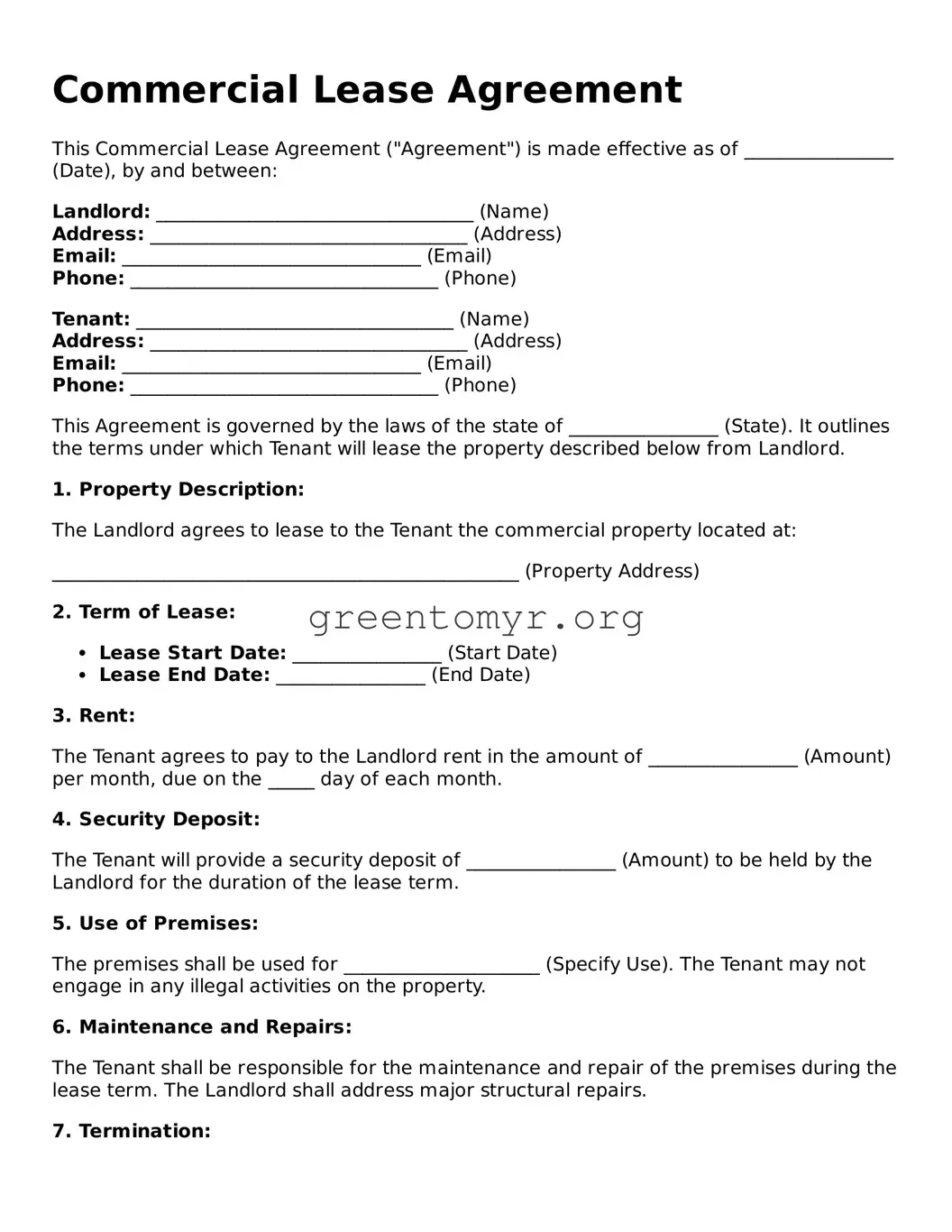Commercial Lease Agreement
This Commercial Lease Agreement ("Agreement") is made effective as of ________________ (Date), by and between:
Landlord: __________________________________ (Name)
Address: __________________________________ (Address)
Email: ________________________________ (Email)
Phone: _________________________________ (Phone)
Tenant: __________________________________ (Name)
Address: __________________________________ (Address)
Email: ________________________________ (Email)
Phone: _________________________________ (Phone)
This Agreement is governed by the laws of the state of ________________ (State). It outlines the terms under which Tenant will lease the property described below from Landlord.
1. Property Description:
The Landlord agrees to lease to the Tenant the commercial property located at:
__________________________________________________ (Property Address)
2. Term of Lease:
- Lease Start Date: ________________ (Start Date)
- Lease End Date: ________________ (End Date)
3. Rent:
The Tenant agrees to pay to the Landlord rent in the amount of ________________ (Amount) per month, due on the _____ day of each month.
4. Security Deposit:
The Tenant will provide a security deposit of ________________ (Amount) to be held by the Landlord for the duration of the lease term.
5. Use of Premises:
The premises shall be used for _____________________ (Specify Use). The Tenant may not engage in any illegal activities on the property.
6. Maintenance and Repairs:
The Tenant shall be responsible for the maintenance and repair of the premises during the lease term. The Landlord shall address major structural repairs.
7. Termination:
This Agreement may be terminated prior to the Lease End Date under the following conditions:
- Mutual Agreement of both parties.
- Violation of Lease terms by Tenant after written notice.
8. Governing Law:
This Agreement shall be governed by the laws of the state of ________________ (State).
IN WITNESS WHEREOF, the parties hereto have executed this Commercial Lease Agreement as of the day and year first above written.
_____________________________
Landlord Signature
_____________________________
Tenant Signature
